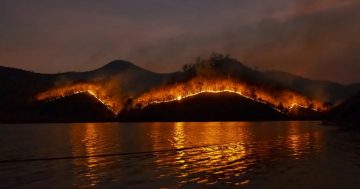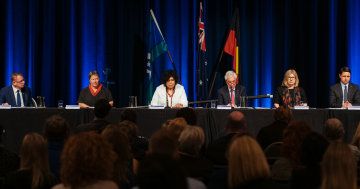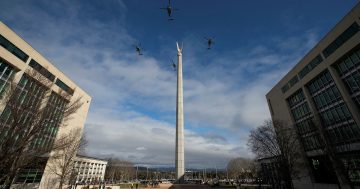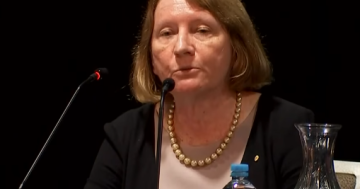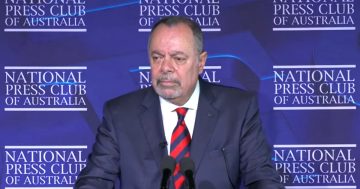
The interim report from the Royal Commission was handed down the same day as the bushfire outlook for the next three months. Photo: Gary Hooker ACTRFS via ESA Twitter.
Consistent bushfire information across state borders, more clarity about the roles and responsibilities of different levels of government and the need to reassess Australia’s current firefighting capacity have all been flagged in the interim report of the Royal Commission into National Natural Disaster Arrangements (also known as the Bushfire Royal Commission).
Although the interim report has not provided any recommendations, it has addressed some of the deficiencies in responding to last summer’s catastrophic bushfires, including the need for consistent access to information about air quality, bushfire warning systems, evacuation directions and bushfire movements to ensure clear and quick communication across jurisdictions.
The Royal Commission has heard that cross-border evacuations and inconsistent terminology caused confusion as fires approached because bushfire warning systems are different in each state and territory.
This also created difficulties for people who used different apps across state borders. For example, NSW’s Fires Near Me app stopped providing information at the Victorian border, despite the fire traversing both states. Air-quality ratings were also different across jurisdictions.
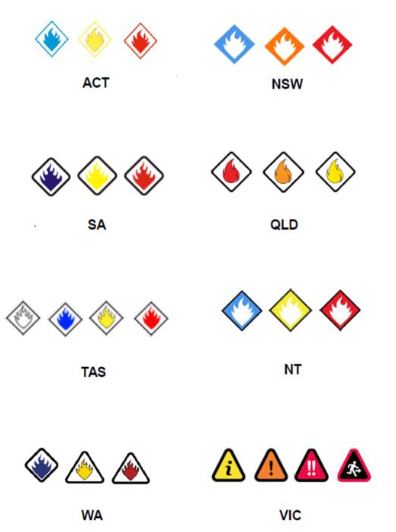
The different fire warning stages across Australia. Photo: Royal Commission.
“The work on the Australian Warning System should be finished as a priority,” the report says.
“Likewise, there are variations in the current fire danger ratings across state and territory fire authorities, and in the guidance on how to react to each level.
“For example, in Victoria, ’Catastrophic’ is ’Code Red’, and in Tasmania ‘Catastrophic’ is represented by black, not red. Some states show the fire danger index for each rating and others do not.
“Nationally consistent and comparable data and information, when made widely available, can deliver efficiencies, avoid duplication, improve understanding, and facilitate decision making.”
Clarity about which department and level of government is responsible for what is also needed, the Royal Commission found.
“Clarity about the roles and responsibilities of various levels of government is therefore necessary to ensure services are delivered effectively and efficiently. State and territory governments have primary responsibility for managing natural disasters,” the report says.
“‘Combat agencies’, such as rural fire services and state emergency services, lead the response to natural disasters. It is for state and territory governments to request Australian Government assistance in support of these responsibilities.
“While state and territory governments can, and do, cooperate among themselves, the Australian Government can play an important national coordination role. The Australian Government also has capability and capacity not available to the states and territories.”
Last summer, bushfires burnt between 24 and 40 million hectares across Australia, killing 32 people and destroying more than 3000 homes, as well as thousands of other structures.
Around $7.6 billion in losses have been attributed to the fires from insurance claims, healthcare costs and foregone tourism.
The interim report was released on the same day as the 2020 bushfire season outlook, which found that apart from some pockets along the Queensland coast and north Western Australia, the rest of the country can expect a normal level of fire risk.
The full report can be found at the Royal Commission into National Natural Disaster Arrangements website.
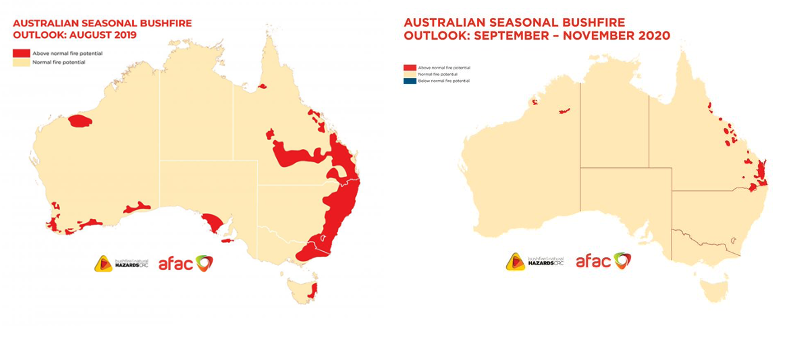
Above-average fire potential locations in 2019 compared to 2020. Photo: BNHCRC.












